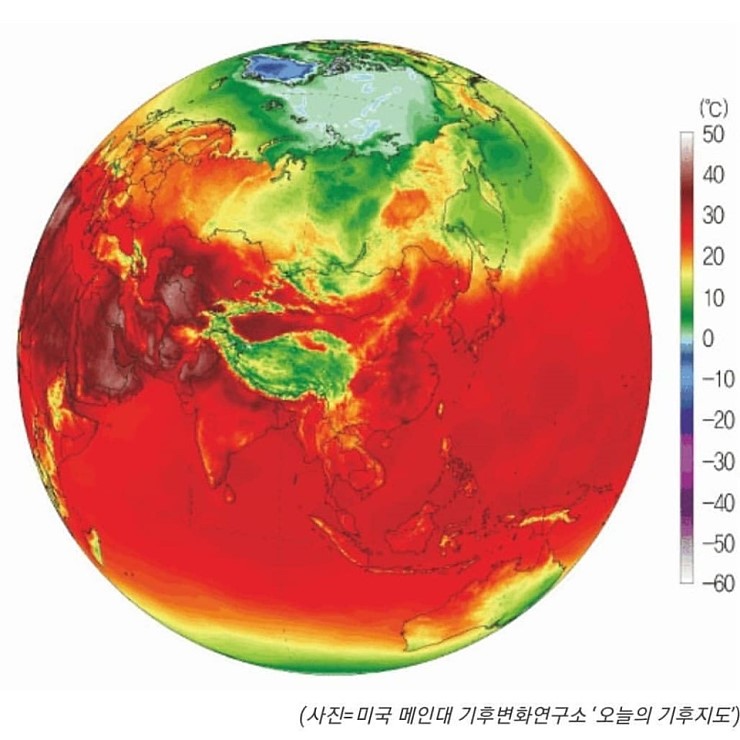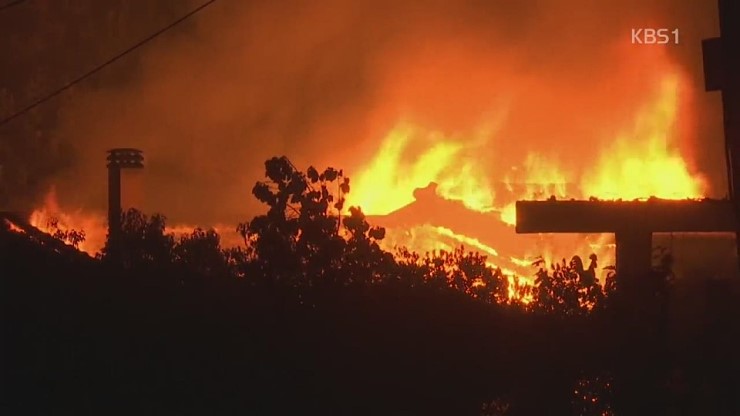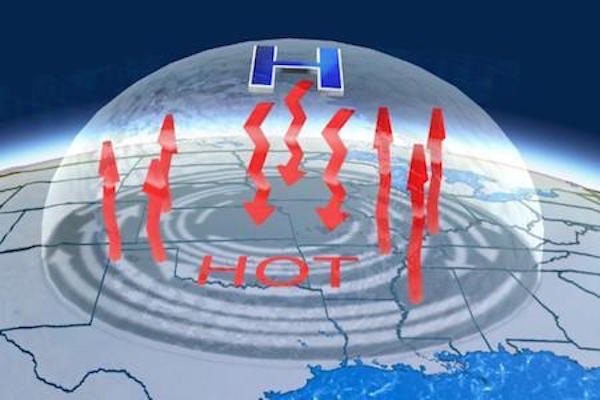Korea faced the worst summer in history with temperatures reaching the highest level in 111 years. The problem was not unique to Korea, as other countries across the world also faced extremely high temperatures this summer. According to National Geographic, from the UK to Scandinavia and Japan, the hot weather was expected to continue for the rest of August. The German Meteorological Association stated that the average temperature in Germany had risen to 39 degrees, but now results of a more recent study predict that number will rise to 40.3 degrees. According to the Baltic Times: News from Latvia, Estonia & Lithuania, water temperature rose to 23 degrees inducing widespread bans on swimming in Poland due to massive algae blooms.
 |
| ▲ Heat map displays how much damage this heat wave has caused to the mid-latitudes. (Photo by University of Maine's Climate Change Institute) |
Heat waves are one of the most damaging climate effects on human society. Severe heat waves cause catastrophic crop failures, forest fires and thousands of the deaths from hyperthermia. A classic example was the 2003 European heat wave, which killed up to 70,000 people. In a high temperature, dry area, as the temperature rises, the frequency of natural forest fires increase in mountainous areas. Sweden was hit by massive forest fires that spread north to the Arctic Circle. In Greece, 60 people died this summer as a result of wildfires. In fact, the entire west coast of the United States and Canada spent the arid summer battling record breaking forest fires.
 |
| ▲ Forest fires that killed about 70 peopleon Athens quickly got spread due to the heat wave. (Photo by KBS News) |
Hot and humid climates also encourage the spread of parasites and infections and increase mosquito populations making exposure to malaria and sleeping sickness, more prevalent. In South Korea, 27 people died of heat stroke and more than 2200 people were hospitalized for heat-related conditions in 2018. In the United States, heat waves caused more deaths annually than tornadoes, earthquakes, floods, and hurricanes combined and the predicted temperature increases mean that it least for the next year, there is no relief in sight.
The Dankook Herald interviewed Tae-hwan Park, a global climate political advisor at Greenpeace to learn more about the global heat wave. Park insisted that the earth has been warming and cooling for a number of reasons, including earth’s orbit, changes in the sun temperature, carbon dioxide released by volcanic eruptions and man-made factors such as aerosol and ozone pollution.
However, Park said this global heatwave is specifically caused by a heat dome. A heat dome occurs when a high pressure in the upper atmosphere acts as a lid, preventing hot air from escaping. The air is forced to sink back to the surface, further warming on the way. Park stated that there are many factors that cause a heat dome, but the main reason for this year’s was the ‘jet stream’ that meandered in loops across Europe and Asia. It created a thermal dome shape that blocked the circulation of wind and trapped the warm air. A consequence of a heat dome is the worsening of our air quality as nitrogen oxide emissions mix with the trapped warm air creating thick smog making it difficult to breath. From his point of view, the heat dome effect expands as greenhouse gas emissions continue, resulting in more air pollution, intensifying the effects of climate change.
 |
| ▲ High pressure acts like a cap on the atmosphere, trapping heat and drying the air. (Photo by The weather network) |
Park emphasized that Greenhouse Gases (GHG: compound gases that trap heat or long wave radiation in the atmosphere) is a fundamental part of this global heatwave. Many scientists studying warming temperatures for the past 20 years have agreed that the most crucial and ineluctable factors to the global heatwave are GHGs.
GHGs occur naturally from carbon dioxide, methane, water vapour and nitrous oxide which are all present in the earth’s atmosphere. Without them, the planet would not be warm enough for humans and animals to live. The problem is that GHGs have increased to an unprecedentedly high rate over the past 200 years due to human activities. The main culprit is the burning of fossil fuels such as coal and oil, which release carbon dioxide and other pollutants to the atmosphere. This combined with rapid deforestation and widespread farming, have increased the rate of GHGs in the air. Trees absorb GHGs and with fewer trees, more gasses are released. Farming livestock also releases large amounts of methane, worsening the problem of GHG emissions.
While the global community has attempted to reduce GHG emissions, the results to date have been unsuccessful. The extremely hot weather we experienced this year was a direct result of our inability to tackle climate change effectively. Park mentioned that a 1℃ increase in average global temperatures from our pre-industrial era was severe enough to melt glaciers and encourage higher temperatures in seas around the world. Both of that are encouraging the extinction of many species. If current growth rates are maintained, we could see the average global temperature rise by 3.4℃, resulting in more heat related deaths and disasters such as mega-typhoons and the melting of sea ice, causing sea levels to rise by up to 60 meters.
Without immediate and transformative actions to reduce GHG emissions, global temperatures are predicted to continue rising. Park said that we need to rapidly reduce our production of GHGs to slow the process of climate change. He thinks the clearest pathway to restricting the global temperature increase to 1.5℃ is through ‘energy transition’, a plan to transform the global energy sector from a reliance on fossil based fuels to zero carbon producing energy. Since the signing of the Paris Agreement, many countries have set policies to limit their carbon emissions. The agreement goal is to limit the average global temperature increase to 2°C or below that of the pre-industrialization level. Ultimately, signatory nations aim to further limit the temperature increase to 1.5°C or less. Despite the U.S. withdrawal in June 2017, some 200 countries accounting for 87 percent of the world's carbon emissions, have committed to carrying out the agreement. Limiting climate change can only be achieved through collective action by all levels of government, ordinary citizens and through responsible business practices. Everyone must have a stake in it for any plan to be effective.
Lifestyle choices can contribute to the carbon reduction movement by eating less meat and dairy, ride sharing or using public transport and reducing single-use consumption. Other factors that can help reduce the global consumption of energy include increasing energy efficiency in buildings, lowering energy demand for transportation and reducing the use of combustion engines. Park said that we are all part of the solution and it’s up to us to take the first steps towards a positive change.
윤진현, 김민, Jane Shak dankookherald@gmail.com

![[Campus Magnifier] Let's Surf the Library!](/news/photo/202404/12496_1765_4143.jpg) [Campus Magnifier] Let's Surf the Library!
[Campus Magnifier] Let's Surf the Library!
![[Campus Magnifier] Let's Surf the Library!](/news/thumbnail/202404/12496_1765_4143_v150.jpg)





